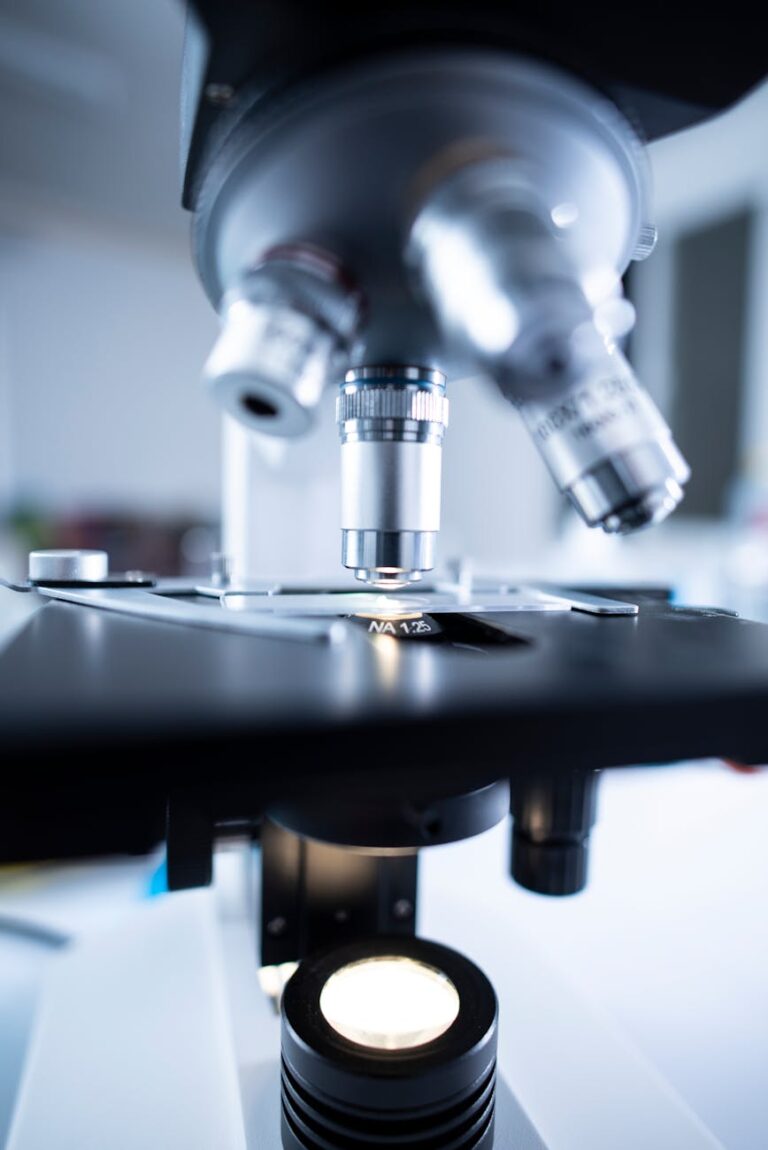Earthquakes Reshape Deep Earth’s Microbial Menu
Beyond the Quake: How Seismic Shifts Reshape Deep Earth’s “Microbial Menu” – A Breakthrough in Science Coverage
Estimated reading time: 10 minutes
Key Takeaways
- Earthquakes significantly alter the chemical “microbial menu” in deep subsurface ecosystems, particularly beneath Yellowstone, creating new nutrient availability.
- Seismic activity fosters change by creating new fractures, releasing trapped gases, exposing fresh minerals, and altering fluid flow, directly impacting chemosynthetic life.
- This research highlights a new and emerging field: seismic biology, demonstrating the dynamic and direct interplay between geological forces and biological activity deep within the Earth.
- The findings have profound implications for astrobiology, suggesting that similar seismic processes could support life on other celestial bodies with subsurface oceans by refreshing nutrient supplies.
- Understanding these deep Earth processes drives innovation in advanced sensing technologies, complex data analytics, bioremediation strategies, and novel biotechnology ventures for various industries.
Table of Contents
- The Unseen Impact of Earthquakes: A Deep Dive into Science Coverage
- Yellowstone: A World Apart
- The Research Unveiled: Changing the Underground Menu
- The Deep Biosphere: An Unseen Engine of Life
- Implications and Broader Horizons of Science Coverage
- Methodological Sophistication
- Future Directions for Science Coverage
- Frequently Asked Questions (FAQs)
In the vast, hidden depths beneath our feet, where sunlight never penetrates and conditions are extreme, life finds a way. Yellowstone National Park, renowned for its dramatic geothermal features and a supervolcano simmering beneath, presents one of Earth’s most dynamic and enigmatic ecosystems. Recent groundbreaking research, which our science coverage explores as it delves into the biggest breakthroughs and strangest discoveries across space, physics, biology, archaeology, health, and beyond, has unveiled something truly unexpected: earthquakes are fundamentally altering the “microbial menu” available to life deep within Yellowstone’s subsurface. This discovery not only reshapes our understanding of extremophile biology but also offers profound insights into the resilience of life and the intricate dance between geological forces and biological activity.
The Unseen Impact of Earthquakes: A Deep Dive into Science Coverage
The Earth’s crust is a mosaic of shifting tectonic plates, and their movements manifest as earthquakes. While we often perceive earthquakes as destructive forces on the surface, their reverberations extend far deeper, influencing environments we are only just beginning to comprehend. The latest findings from Yellowstone highlight a fascinating interaction: seismic events aren’t just shaking the ground; they’re directly impacting the chemical landscape that sustains microbial communities residing miles beneath the surface. This particular piece of science coverage explores the biggest breakthroughs and strangest discoveries across space, physics, biology, archaeology, health, and beyond, focusing on the subterranean world.
Yellowstone: A World Apart
To appreciate the significance of this research, one must first grasp the unique nature of Yellowstone. It sits atop a supervolcano, a colossal magma chamber that fuels its famous geysers, hot springs, and fumaroles. This geothermal activity creates an environment of extreme temperatures, pressures, and chemical compositions, fostering unique ecosystems teeming with extremophiles – organisms that thrive in conditions deadly to most other life forms.
For decades, scientists have studied Yellowstone’s surface features, marveling at the vibrant microbial mats and the resilience of life in its boiling pools. However, the deep subsurface has remained largely a mystery. It’s a realm where microbes don’t rely on photosynthesis but rather chemosynthesis, deriving energy from chemical reactions with minerals and dissolved gases. This “microbial menu” consists of compounds like hydrogen sulfide, methane, hydrogen gas, and various metallic ions.
The Research Unveiled: Changing the Underground Menu
The recent study, led by researchers examining the subsurface microbiology of Yellowstone, focused on how seismic activity influences these deep-seated ecosystems. Their investigation revealed that earthquakes are not merely disruptive events but catalysts for change, altering the very availability of nutrients and energy sources for underground microbes.
Imagine the Earth’s crust as a complex, fractured network of rock. Earthquakes, by creating new fractures or re-opening old ones, can dramatically alter the flow of fluids and gases through this network. This can have several critical effects:
- Release of Trapped Gases: Deep underground, various gases (like carbon dioxide, methane, hydrogen sulfide) are often trapped within rock formations or dissolved in hydrothermal fluids. Seismic activity can create pathways, allowing these gases to migrate upwards, becoming available to microbial communities.
- Exposure of Fresh Minerals: Earthquakes can fracture rocks, exposing fresh mineral surfaces previously inaccessible. These minerals, through chemical weathering, can release essential elements and compounds that serve as electron donors or acceptors for chemosynthetic organisms.
- Alteration of Fluid Flow: Seismic events can change permeability, directing hydrothermal fluids to new areas or altering their path. These fluids carry dissolved nutrients, heat, and chemical energy, all vital for deep microbial life. A shift in flow can mean a new “delivery” of food to previously nutrient-poor zones, or conversely, a redirection away from established communities.
- Temperature and Pressure Changes: While perhaps more transient, seismic waves can induce localized changes in temperature and pressure, which can influence reaction rates and the solubility of various compounds, indirectly affecting the microbial menu.
The researchers observed that these changes were “unexpected” because the scale and nature of the microbial response to seismic shifts were more pronounced and rapid than previously theorized. It suggests a direct and significant coupling between geological forces and biological productivity in the deep subsurface.
The Deep Biosphere: An Unseen Engine of Life
This discovery adds another layer of complexity to our understanding of the deep biosphere – the collective term for all life residing beneath the Earth’s surface. For a long time, scientists believed life was confined to the surface or shallow depths. However, in recent decades, we’ve uncovered vast, thriving ecosystems extending miles into the crust, forming a significant portion of Earth’s total biomass. These organisms play crucial roles in global biogeochemical cycles, influencing everything from climate regulation to mineral formation.
The Yellowstone research underscores that these deep-seated communities are not static. They are dynamic, responsive, and intimately connected to the very geological processes that shape our planet. The concept of an “underground microbial menu” evolving with seismic activity presents a new paradigm for studying subsurface life and its remarkable adaptability.
Chemosynthesis: The Foundation of Deep Earth Life
Unlike surface ecosystems powered by sunlight through photosynthesis, deep Earth life largely relies on chemosynthesis. This process involves organisms extracting energy from inorganic chemical reactions. For example, some bacteria might oxidize hydrogen sulfide to produce energy, while others might reduce sulfates or utilize methane. Earthquakes, by liberating new chemicals or altering their concentrations, directly influence the fuel sources for these chemosynthetic powerhouses.
Implications and Broader Horizons of Science Coverage
The implications of this research are far-reaching, touching upon multiple scientific disciplines and even real-world applications. Our ongoing science coverage explores the biggest breakthroughs and strangest discoveries across space, physics, biology, archaeology, health, and beyond, and this finding perfectly encapsulates the interconnectedness of seemingly disparate fields.
For Earth Sciences and Geology:
- Biogeochemical Cycling: The discovery highlights how geological events like earthquakes can directly influence the cycling of elements such as carbon, sulfur, and nitrogen deep underground. Understanding these interactions is crucial for comprehensive Earth system models.
- Seismic Biology: It firmly establishes a new field of study – seismic biology – which investigates the biological responses to seismic activity. This could lead to new ways of interpreting seismic data or even predicting certain geological phenomena.
- Hydrothermal Systems: Better understanding of how earthquakes modify hydrothermal flow can improve models of geothermal energy resources and the evolution of hot spring systems.
For Microbiology and Extremophile Research:
- Adaptation and Resilience: The ability of deep microbial communities to adapt to suddenly altered nutrient landscapes speaks volumes about their evolutionary strategies and resilience. This informs our understanding of life’s fundamental capacity to thrive in extreme and dynamic environments.
- Diversity of Life: New nutrient availability could foster the growth of different microbial species, potentially increasing biodiversity in specific zones post-earthquake.
For Astrobiology and the Search for Extraterrestrial Life:
- Habitability Beyond Earth: This finding has profound implications for the search for life beyond Earth. If life can thrive in Earth’s deep, seismically active subsurface, powered by chemosynthesis altered by geological events, then similar conditions might support life on other planets or moons (e.g., Europa, Enceladus) that possess subsurface oceans and geological activity. It suggests that seismic activity, often seen as a destructive force, could also be a life-sustaining one on other worlds by refreshing nutrient supplies.
- Biosignatures: Understanding the unique microbial communities influenced by seismic events could help astrobiologists identify potential biosignatures in extraterrestrial environments.
For Business Innovation and Societal Impact:
While seemingly remote, the insights from this Yellowstone research offer tangible value for business professionals, entrepreneurs, and tech-forward leaders:
- Advanced Sensing and Monitoring Technologies: Understanding deep Earth processes requires cutting-edge sensor technology – highly durable, precise, and capable of operating in extreme conditions. Companies developing seismic sensors, chemical analysis tools for subterranean environments, and remote monitoring systems stand to benefit and innovate further.
- Data Analytics and Predictive Modeling: The complex interplay between seismic events, fluid dynamics, and microbial ecology generates massive datasets. Advanced AI and machine learning techniques will be crucial for synthesizing this information, identifying patterns, and building predictive models. Entrepreneurs in data science and AI can find new applications here.
- Bioremediation and Resource Management: If we can understand how microbes react to altered chemical environments, this knowledge could be harnessed for targeted bioremediation strategies in polluted underground aquifers or for optimizing microbial communities in geothermal energy systems.
- Resilience and Adaptability Paradigms: The study of extremophiles offers powerful lessons in resilience and adaptability. Businesses facing disruptive changes (market shifts, technological advancements) can draw parallels from how these microbial communities survive and thrive in dynamic, high-stress environments.
- New Biotechnology Ventures: The unique enzymes and metabolic pathways of extremophiles found in these dynamically changing environments could hold the key to novel biotechnological applications, from industrial catalysts to pharmaceuticals, capable of functioning under harsh conditions.
- Exploration and Infrastructure: For companies involved in deep drilling, geothermal energy, or even underground infrastructure, a better understanding of subsurface dynamics and the biological responses to geological forces can improve safety, efficiency, and environmental impact assessments.
Methodological Sophistication
To conduct such research, scientists employ a sophisticated arsenal of techniques. This includes:
- Deep Subsurface Drilling and Sampling: Extracting rock and fluid samples from miles underground is a monumental engineering feat, often involving specialized drilling rigs and sterile collection protocols to prevent contamination.
- Geochemical Analysis: Analyzing the chemical composition of fluids and gases (e.g., mass spectrometry, chromatography) to identify nutrients, electron donors/acceptors, and markers of seismic activity.
- Metagenomics and Metatranscriptomics: DNA and RNA sequencing of microbial communities to identify species present (who’s there) and genes being expressed (what they’re doing) in response to environmental changes.
- Seismic Monitoring: Deploying networks of seismometers to precisely track earthquake activity, including tremors, their depths, and magnitudes, and correlating these events with observed biological and chemical changes.
- Hydrogeological Modeling: Computer simulations to understand how fluid flow changes in fractured rock systems under seismic stress.
The synergy of these high-tech approaches allows researchers to piece together the complex narrative of life interacting with geological forces in unprecedented detail. This multi-disciplinary approach itself is a testament to modern scientific innovation.
Future Directions for Science Coverage
This discovery opens numerous avenues for future research. Scientists will likely pursue:
- Long-term Monitoring: Establishing permanent deep-subsurface observatories to continuously monitor geochemical and microbiological changes before, during, and after seismic events.
- Specific Microbial Responses: Identifying specific microbial taxa that thrive or decline in response to different types of seismic-induced chemical shifts.
- Global Extrapolation: Investigating if similar earthquake-driven nutrient alterations occur in other tectonically active regions or deep biosphere environments worldwide.
- Modeling and Prediction: Developing predictive models to forecast how specific seismic events might influence subsurface biogeochemical cycles and microbial community structures.
As our science coverage explores the biggest breakthroughs and strangest discoveries across space, physics, biology, archaeology, health, and beyond, it becomes clear that the Earth’s interior remains one of the greatest frontiers of scientific exploration, continually revealing new wonders and challenging our preconceptions about life itself.
Frequently Asked Questions (FAQs)
A: Yellowstone is a supervolcanic caldera, making it one of the most geothermally active regions on Earth. Its unique geology includes a vast magma chamber, extensive hydrothermal systems (hot springs, geysers), and active seismic zones. This combination creates a dynamic deep subsurface environment with readily observable interactions between geological processes (like earthquakes) and unique microbial ecosystems that thrive in extreme conditions, making it a natural laboratory for this kind of research.
A: Scientists use a multi-pronged approach. This includes drilling deep boreholes to collect rock and fluid samples, which are then analyzed geochemically to identify chemical compositions and changes. Metagenomic and metatranscriptomic sequencing are used to identify the types of microbes present and their active metabolic pathways. Sophisticated seismic sensors monitor earthquake activity, while hydrogeological models simulate fluid flow. By correlating seismic events with subsequent chemical and biological shifts in sampled materials, researchers can piece together the impact.
A: Absolutely, this research has significant implications for astrobiology. Many extraterrestrial bodies, such as Jupiter’s moon Europa and Saturn’s moon Enceladus, are believed to harbor subsurface oceans and exhibit geological activity. If seismic activity on Earth can create and refresh nutrient supplies for deep-seated life, similar processes could support life in the hidden oceans of these moons. It expands the potential “habitable zones” we consider for extraterrestrial life, suggesting that geological dynamism, even violent quakes, could be a boon for life.
A: This research has several practical applications. It can improve our understanding of biogeochemical cycles, which are crucial for Earth system modeling and climate science. For the energy sector, it can aid in the better management of geothermal resources and potentially in the bioremediation of underground contaminants. From a technological perspective, it drives innovation in advanced subsurface sensing, data analytics, and modeling tools. For biotech, extremophiles thriving in these dynamic environments could yield novel enzymes or compounds with industrial or medical applications. More broadly, it offers insights into resilience and adaptability in extreme environments, a valuable lesson for many fields.
A: While the study of the deep biosphere and extremophiles has been ongoing for decades, the explicit investigation into how seismic events directly and significantly alter the “microbial menu” is a relatively new and exciting frontier. It builds upon our understanding of geomicrobiology and plate tectonics, pushing the boundaries into what could be termed “seismic biology” – the study of biological responses to geological forces. It represents a significant leap in understanding the intricate feedback loops between Earth’s physical and biological systems.
The hidden world beneath Yellowstone continues to astound us, serving as a powerful reminder of life’s incredible tenacity and adaptability. The discovery that earthquakes are dynamic architects of the deep subsurface “microbial menu” is a testament to the intricate interconnectedness of our planet’s geological and biological systems. As our science coverage explores the biggest breakthroughs and strangest discoveries across space, physics, biology, archaeology, health, and beyond, this finding not only pushes the boundaries of geomicrobiology but also offers profound insights into the resilience of life itself – insights that resonate from the heart of our planet to the distant possibilities of life in the cosmos. For business leaders and innovators, it underscores the value of investing in deep scientific exploration, recognizing that breakthroughs in seemingly niche areas can unlock transformative opportunities across diverse sectors, from advanced technology to environmental solutions and beyond.
This article is brought to you by science coverage, your guide to exploring the biggest breakthroughs and strangest discoveries across space, physics, biology, archaeology, health, and beyond. From black holes and dinosaur bones to fusion energy and mRNA vaccines, we dig into how the universe works, how science shapes our world, and where it collides with politics. Science has never mattered more—and we’re here to make sense of it.







